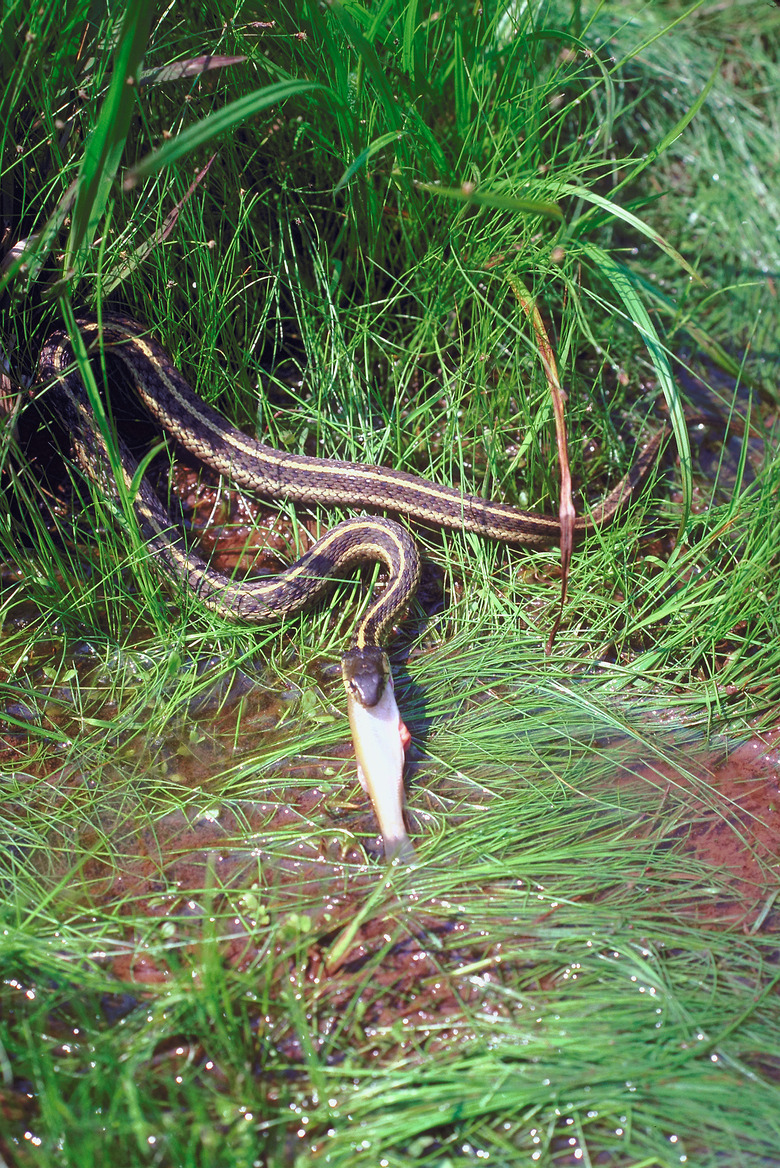How To Identify Snakes With A Stripe Down The Center Of The Back
While many snakes have stripes running the length of their body, only a few species in the United States have a distinct stripe running down the center of their back. Correctly identifying the type of snake is a simple process since the color of the stripe varies from species to species. Using a digital camera and a good field guide as a reference is a good way to get a close look at the snake without having to capture the animal, preventing possible injury to you and the striped snake.
Get a Closeup With a Camera
Get a Closeup With a Camera
Approach the snake slowly and use the zoom on your digital camera to get a closeup picture of the snake without physically getting too close. Many snakes are skittish and will flee if you get too close. Take several pictures to capture as much detail about the snake's appearance as possible to make the identification process easy.
Determine Approximate Length
Determine Approximate Length
Estimate the size of the striped snake. The specific length can be difficult to judge since snakes often coil up to make their body smaller when they are threatened. If the snake is less than 12 inches, brown or gray in color and has a light gray or white stripe down the center of the back, it is likely a brown snake.
Look for Stripes and Patterns
Look for Stripes and Patterns
Look carefully at the color and number of stripes on the snakes back. In addition to a distinct stripe running down the center of their back, several snakes have additional stripes and patterns on their side. Garter snakes, ribbon snakes and patch-nosed snakes all have multiple yellow stripes. Use a field guide to distinguish between the color patterns of each type.
Beware Black Snake With Orange Stripe
Beware Black Snake With Orange Stripe
Stay far away from snakes more than 2 feet long that have a single orange stripe with dark brown or black color pattern along their body. Timber rattlesnakes are the only venomous snake that sometimes have a stripe down the center of their back. However, the appearance and behavior of timber rattlesnakes is highly variable and they do not always have an orange stripe on their back or rattle their tail when approached.
Things Needed
- Snake field guide
- Digital camera
Cite This Article
MLA
Campbell, Damien. "How To Identify Snakes With A Stripe Down The Center Of The Back" sciencing.com, https://www.sciencing.com/identify-stripe-down-center-back-8755612/. 10 August 2018.
APA
Campbell, Damien. (2018, August 10). How To Identify Snakes With A Stripe Down The Center Of The Back. sciencing.com. Retrieved from https://www.sciencing.com/identify-stripe-down-center-back-8755612/
Chicago
Campbell, Damien. How To Identify Snakes With A Stripe Down The Center Of The Back last modified March 24, 2022. https://www.sciencing.com/identify-stripe-down-center-back-8755612/
